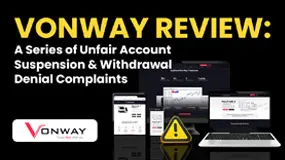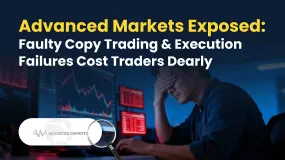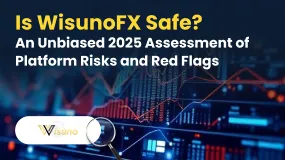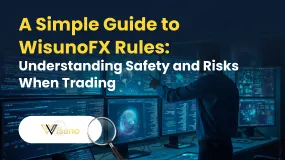Abstract:Discover the intricacies of price manipulation on trading platforms. Learn to detect and protect against it with these helpful methods and tools. Stay informed and be aware to safeguard your investments.

Understanding Trading Platforms and Price Manipulation
Trading platforms serve as virtual marketplaces where buyers and sellers conduct transactions involving various financial instruments. These platforms, regulated by financial authorities in different jurisdictions, are meant to offer an unbiased environment for trading. However, there have been debates over price manipulation, a kind of market abuse that distorts the true worth of shares.
Price manipulation is described as activities that artificially raise or lower the price of an asset. It may take many forms, including “pump and dump” frauds, “wash trading,” and “spoofing.” While laws exist to identify and prohibit such behavior, the issue remains: Is it conceivable and simple to manipulate prices on a trading platform?
The Intricacies of Price Manipulation
Price manipulation on trading platforms isn't as straightforward as it may seem. Although it is technically possible, the likelihood and ease of it happening depend on numerous factors.
One such factor is the size and liquidity of the market. In smaller, less liquid markets, manipulation may be easier because a single large transaction can significantly move prices. On the contrary, in larger, more liquid markets, it becomes more challenging as it requires considerable capital to impact prices noticeably.
Moreover, the presence of effective regulation and surveillance is crucial in curbing price manipulation. Regulatory bodies have sophisticated tools for identifying suspicious trading activity. Offenders risk severe penalties, including substantial fines and imprisonment.
How Can You Detect Price Manipulation In Forex Trading?

Price manipulation in forex trading may be difficult to detect, particularly for inexperienced traders. However, there are various methods for detecting suspected pricing manipulation:
1. Unusual Price Swings or Spikes
If you notice unusual price swings or spikes that seem to deviate from the market's general trend without a reasonable economic explanation, this could be a sign of price manipulation. These spikes often occur just before major news announcements or at the market opening or closing times.
2. Significant Price Changes with Low Trading Volume
Price manipulation often involves large price movements with relatively low trading volume. If you see a significant price change that isn't backed by an equally substantial volume, it could indicate potential manipulation.
3. Abnormal Bid-Ask Spreads
In a fair and competitive market, bid-ask spreads should be relatively narrow. However, a manipulated market may have unusually wide bid-ask spreads, which could indicate that the market maker or broker is manipulating prices.
4. Stop-Loss Hunting
“Stop-loss hunting” is a technique often associated with price manipulation. It involves moving the price of a currency to a level where many traders have set stop-loss orders, only for the price to return to its previous level shortly afterward. If you frequently find your stop-loss orders getting hit and then see the price moving back in the original direction, you might be a victim of stop-loss hunting.
5. Use of Advanced Tools and Software
Many trading platforms and software offer tools to help detect potential price manipulation. These include volume analysis tools, statistical analysis features, and algorithms that can analyze market data for anomalies.
6. Regulatory Reports and Sanctions
Regulatory bodies worldwide frequently monitor and investigate suspected cases of market manipulation. Checking the reports and sanctions from these regulatory bodies can help identify brokers or market participants who have been involved in price manipulation.
Protection Against Price Manipulation
Forewarned is forearmed. By understanding how price manipulation works, traders can protect themselves. Due diligence is essential: researching the security, understanding market trends, and observing trading volumes can help identify irregularities.
To further safeguard against such practices, traders can use third-party platforms like the WikiFX App. This app helps users assess the reliability of Forex brokers, providing information about their regulatory status, operational history, and user reviews. It's an additional layer of protection that assists traders in making informed decisions.
Please click the link: https://www.wikifx.com/en/exposure/revelation/1.html to explore the WikiFX App and a comprehensive list of exposures.
On your smartphone, open the WikiFX App and tap the exposure button. (As the image shown below)

Awareness: Knowledge is Power
Maintaining awareness of the trading environment is crucial in preventing victimization from price manipulation. This involves staying updated with market news, understanding the inherent risks involved in trading, and being skeptical of too-good-to-be-true opportunities.
Moreover, traders should understand the indicators of potential manipulation. Unusual price movements, abnormal trading volumes, or sudden news related to a particular security are often red flags.
Using resources like the WikiFX App also helps in maintaining this awareness. The platform provides not just broker assessments but also industry news, enhancing a trader's overall understanding of the market environment.
Conclusion: Navigating the Trading Landscape with Caution
Price manipulation on a trading platform is a possibility, but it isn't as easy as it may seem. The size and liquidity of the market, alongside robust regulation and surveillance, often serve as substantial hurdles to such practices.
Nonetheless, traders should arm themselves with knowledge and vigilance. By understanding how price manipulation works and staying updated with market trends, they can better protect themselves. Utilizing tools like the WikiFX App can further reinforce this protection, offering insights into the reliability of brokers and current market news.
In conclusion, while the trading landscape may seem daunting with the threat of price manipulation, equipped with the right knowledge and tools, traders can navigate it with caution and confidence.
Stay informed about the latest news by downloading and installing the WikiFX App on your smartphone. Access the App by clicking on the following link: https://social1.onelink.me/QgET/px2b7i8n.












